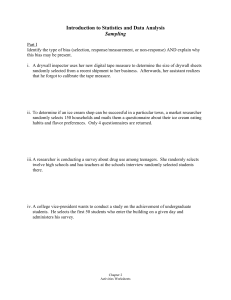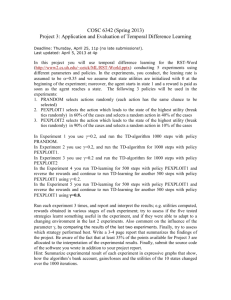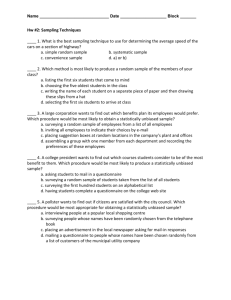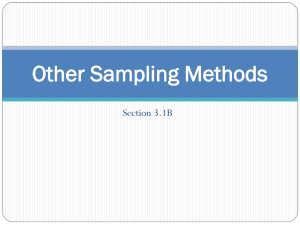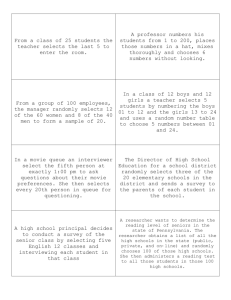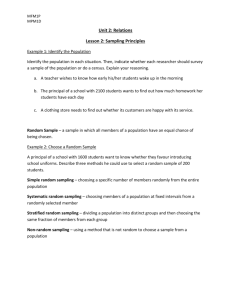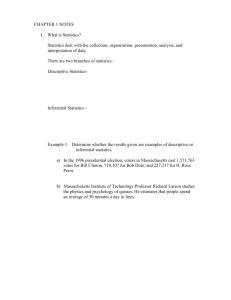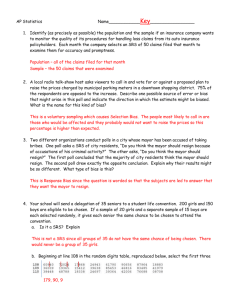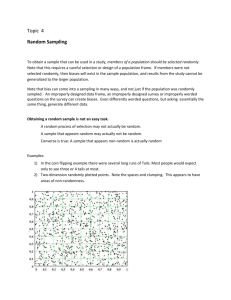Sampling Quiz Review - White Plains Public Schools
advertisement
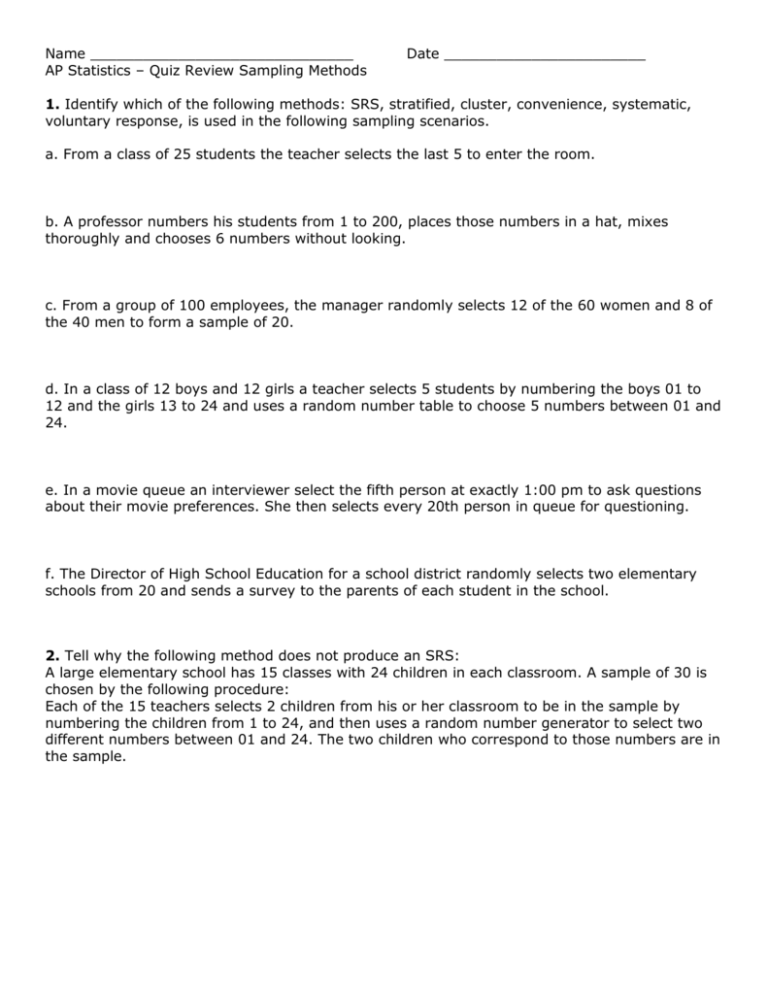
Name ______________________________ AP Statistics – Quiz Review Sampling Methods Date _______________________ 1. Identify which of the following methods: SRS, stratified, cluster, convenience, systematic, voluntary response, is used in the following sampling scenarios. a. From a class of 25 students the teacher selects the last 5 to enter the room. b. A professor numbers his students from 1 to 200, places those numbers in a hat, mixes thoroughly and chooses 6 numbers without looking. c. From a group of 100 employees, the manager randomly selects 12 of the 60 women and 8 of the 40 men to form a sample of 20. d. In a class of 12 boys and 12 girls a teacher selects 5 students by numbering the boys 01 to 12 and the girls 13 to 24 and uses a random number table to choose 5 numbers between 01 and 24. e. In a movie queue an interviewer select the fifth person at exactly 1:00 pm to ask questions about their movie preferences. She then selects every 20th person in queue for questioning. f. The Director of High School Education for a school district randomly selects two elementary schools from 20 and sends a survey to the parents of each student in the school. 2. Tell why the following method does not produce an SRS: A large elementary school has 15 classes with 24 children in each classroom. A sample of 30 is chosen by the following procedure: Each of the 15 teachers selects 2 children from his or her classroom to be in the sample by numbering the children from 1 to 24, and then uses a random number generator to select two different numbers between 01 and 24. The two children who correspond to those numbers are in the sample. 3. A high school principal decides to conduct a survey of the senior class by selecting one government class and interviewing each student in that class. Why does this method suffer from bias? 4. Describe how you would design a stratified random sample to obtain a reaction to implementing a new dress code policy among students at WPHS. Be specific. 5. Identify in context the type of bias (if there is any) present in the following sampling situations: a. Horizon Wireless is thinking of entering the satellite TV business. Their planning department decides to survey their existing cell phone customers regarding their interest in satellite TV. b. The Houston Police Department is concerned about it public image so they develop a survey to be administered by uniformed police officers to a randomly chosen sample of households. c. Prior to graduation each member of the senior class is required to participate in a survey about their school experiences. In order to walk at graduation they need to complete the survey online. d. A car dealer wants to estimate the mean number of car per household in a medium sized city. He obtains detailed aerial photographs of the city and randomly selects 250 locations on the map. The house nearest each selected location is identified and an employee is sent to that home to ask the owner how many cars they own. The employee follows up until each home responds. e. A medical researcher is interested in the view smokers have on the health risks of cigarettes. They position themselves at local convenience store and ask people they see buying cigarettes if they believe the smoking causes cancer. 6. Suppose 1,000 iPhones are produced at a factory today. Management would like to ensure that the phones’ display screens meet their quality standards before shipping them to retail stores. Since it takes about 10 minutes to inspect an individual phone’s display screen, managers decide to inspect a sample of 20 phones from the day’s production. a) An eager employee suggests that it would be easy to inspect the last 20 iPhones that were produced today. Why isn’t this a good idea? b) Another employee recommends inspecting every 50th iPhone that is produced. What type of sampling procedure is this? Explain carefully why this sampling method is not an SRS (simple random sample).
